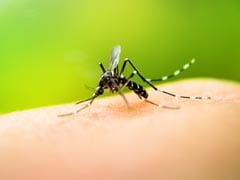What Is Pollution Rash: Understanding its symptoms and prevention can help safeguard skin health amid rising pollution levels.

What Is Pollution Rash: Signs And Prevention Tips For Skin Rashes
As of February 2025, India's air quality remains a significant concern, with many cities experiencing elevated pollution levels. For instance, on February 4, 2025, Delhi recorded an Air Quality Index (AQI) of 264, categorising it as ‘Poor'. Such heightened pollution levels can adversely affect health, including the skin. One common manifestation is pollution-induced skin rashes, often referred to as “pollution rash.”
A recent WHO report highlighted that prolonged exposure to polluted air can weaken the skin barrier, leading to conditions like pollution rash, a type of skin irritation caused by toxic particles, chemicals, and allergens in the air. Understanding its symptoms and prevention can help safeguard skin health amid rising pollution levels.
Understanding pollution rash
Pollution rash is a skin condition triggered by exposure to environmental pollutants. Airborne contaminants like particulate matter (PM), nitrogen dioxide (NO₂), sulphur dioxide (SO₂), and ground-level ozone can penetrate the skin's barrier, leading to inflammation and irritation. This exposure can result in various skin issues, including rashes, eczema, and contact dermatitis.
Signs and symptoms of pollution rash
Individuals exposed to high pollution levels may experience the following symptoms of pollution rash.
1. Redness and inflammation
The skin may appear red and feel warm to the touch due to inflammatory responses.
2. Itching or burning sensation
Pollutants can irritate nerve endings, causing discomfort.
3. Dryness and flakiness
Exposure can disrupt the skin's moisture balance, leading to dryness.
4. Acne and breakouts
Pollutants can clog pores, resulting in acne formation.
5. Hyperpigmentation
Prolonged exposure may lead to dark spots or uneven skin tone.
A review in the Indian Journal of Dermatology, Venereology, and Leprology highlighted that tropospheric ozone exposure is associated with conditions like urticaria, eczema, contact dermatitis, and rashes .
Preventive measures of pollution rash
To protect your skin from pollution-induced rashes follow these preventive measures.
1. Regular cleansing
Wash your face and exposed skin areas twice daily to remove pollutants. Use a gentle, pH-balanced cleanser to avoid stripping natural oils.
2. Moisturise
Apply a good-quality moisturiser to strengthen the skin barrier, preventing pollutant penetration.
3. Sun protection
Use broad-spectrum sunscreen daily. UV rays can exacerbate the harmful effects of pollutants on the skin.
4. Antioxidant-rich skincare
Incorporate products containing antioxidants like vitamin C and E to combat oxidative stress caused by pollutants.
5. Protective clothing
Wear long sleeves, scarves, and hats to minimise skin exposure, especially on high pollution days.
6. Indoor air quality
Use air purifiers and keep indoor plants to reduce indoor pollution levels.
7. Stay informed
Monitor local AQI levels and limit outdoor activities when pollution levels are high.
Consult a dermatologist
If you experience persistent skin issues or rashes despite taking preventive measures, consult a dermatologist. They can provide tailored advice and treatments to manage and alleviate symptoms effectively.
In conclusion, with the current pollution levels in India, it's essential to adopt proactive skincare measures to protect against pollution-induced rashes. By understanding the signs and implementing preventive strategies, you can maintain healthier skin amidst environmental challenges.
Disclaimer: This content including advice provides generic information only. It is in no way a substitute for a qualified medical opinion. Always consult a specialist or your own doctor for more information. NDTV does not claim responsibility for this information.
DoctorNDTV is the one stop site for all your health needs providing the most credible health information, health news and tips with expert advice on healthy living, diet plans, informative videos etc. You can get the most relevant and accurate info you need about health problems like diabetes, cancer, pregnancy, HIV and AIDS, weight loss and many other lifestyle diseases. We have a panel of over 350 experts who help us develop content by giving their valuable inputs and bringing to us the latest in the world of healthcare.














